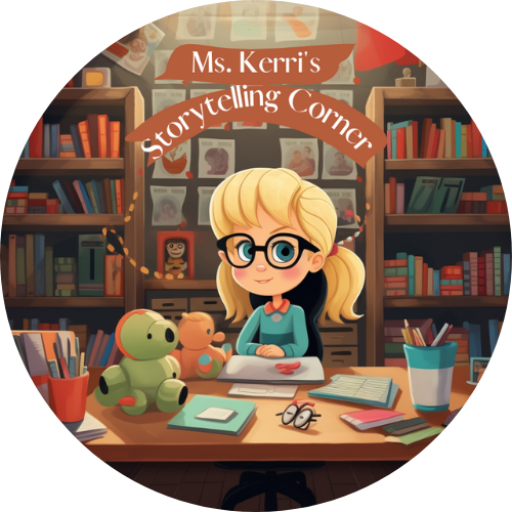What Is The Most Important Activity For Children?
Childhood is a time of wonder and exploration, filled with endless possibilities for growth and development. In this article, we delve into the most important activity for children and the key takeaways that come with it.
Key Takeaways
- Exploring the great outdoors provides children with opportunities for physical activity, sensory experiences, and a connection to nature.
- Engaging in arts and crafts allows children to express their creativity, develop fine motor skills, and boost self-esteem.
- Learning to cook with chaos teaches children valuable life skills, fosters independence, and encourages healthy eating habits.
- Diving into imaginary worlds through play sparks creativity, enhances problem-solving skills, and promotes social interaction.
- Developing a love for reading nurtures language development, expands vocabulary, and cultivates a lifelong passion for learning.
The Ultimate Activity for Little Rascals
Exploring the Great Outdoors
Ah, the great outdoors – a vast expanse of greenery, the ultimate playground for every mini explorer. Let’s face it, there’s nothing quite like the smell of fresh mud on a pair of tiny wellies. It’s where the wild things are and, more importantly, where our little ones can run, jump, and shout to their heart’s content.
Freedom is the keyword here, folks. Out there, the rules of the indoors don’t apply. Want to build a castle out of sticks? Go for it. Fancy bug hunting with a magnifying glass? The more the merrier. And let’s not forget the timeless joy of splashing in puddles – an activity that transcends generations!
The beauty of outdoor play is that it’s as limitless as a child’s imagination.

Here’s a quick rundown of why this activity reigns supreme:
- It boosts physical health and endurance.
- It encourages a connection with nature.
- It fosters independence and problem-solving skills.
Remember, every little adventurer needs a quest, and what better quest than discovering the wonders of the world, one giggle at a time? So, slap on the sunscreen, pack a snack, and let the wild rumpus start!
Getting Messy with Arts and Crafts
Let’s dive into the gloriously gooey world of arts and crafts, where the only rule is that there are no rules! Splatter, sprinkle, and smear your way to masterpieces that would make a fridge feel proud. It’s a tactile tornado of textures and colors, where little fingers become the brushes and the whole world is their canvas.
Creativity blooms in the messiest of spaces, and what’s a bit of paint between the sofa cushions, anyway? Embrace the chaos, for within it lies the seeds of imagination. Here’s a quick rundown of the essentials:
- Non-toxic paint: because we all know where that’s going to end up.
- Glitter: the hereditary bane of vacuum cleaners.
- Paper: lots of it, the bigger the better!
Remember, every splodge and splatter is a story waiting to unfold, a lesson in color, form, and the joy of making something from nothing.
So, don your aprons—or don’t, for that’s half the fun—and let the creations commence. From paper mache volcanoes erupting with bubbly vinegar lava to handprints that somehow look like exotic birds, the results are always gallery-worthy. In the grand tapestry of childhood, these are the threads that weave confidence, problem-solving, and a dash of good old-fashioned fun.
Learning to Cook with Chaos
Whisking up a storm in the kitchen isn’t just about creating edible concoctions; it’s a full-blown sensory explosion and a chaotic dance of ingredients. Toddlers to tweens can transform into mini master chefs, albeit with a generous sprinkle of mess. It’s a recipe for laughter, learning, and a dash of lunacy.
- Measure a cup of patience.
- Fold in heaps of creativity.
- Stir in a pinch of mayhem (and maybe a few flying spaghetti).
Embrace the pandemonium as each spill leads to a story and every flop turns into a lesson in resilience. Cooking is the secret sauce to blending life skills with a taste of science and math.
In the culinary dojo of the young, we’re not just baking cookies; we’re engineering delicious designs. It’s where fractions meet flavors and units of measure get a taste of reality. This hands-on approach is a perfect mix for fostering curiosity and critical thinking, essential ingredients for a lifelong love for STEM.
The Epic Quest for Fun and Learning
Diving into Imaginary Worlds
In the realm of make-believe, little adventurers don the cape of creativity, embarking on epic quests without ever leaving the playroom. The Art of Patience blooms as open-ended toys lay the groundwork for a kingdom where time ticks by unnoticed. This independence allows children to entertain themselves, patiently diving into their imaginary worlds.
Parents can rest easy, knowing their children are not just playing, but also honing skills that are crucial for their development.
With a dash of fantasy, a sprinkle of drama, and a whole lot of dress-up, kids learn to navigate complex social scenarios. They’re not just pirates or princesses; they’re budding strategists, diplomats, and problem-solvers:
- Crafting intricate backstories
- Negotiating the perils of dragon-infested lands
- Collaborating on the fly to save their stuffed animal kingdom
It’s a whirlwind of activity where the only limit is the sky—or perhaps, the ceiling.
Solving Puzzles and Brain Teasers
Twist and turn, match and learn! Puzzles and brain teasers are the ultimate gym for those little grey cells. It’s a brain-buffing bonanza that’ll have the kiddos scratching their noggins and shouting ‘Eureka!’ faster than you can say ‘Where’s the last piece?’.
Strategy, patience, and a dash of creativity are the secret ingredients to becoming a puzzle master. Watch in awe as your little ones dive into a world of shapes and patterns, transforming confusion into concentration.
- Start with simple shapes
- Gradually increase complexity
- Celebrate each victory
Remember, every puzzle solved is a high-five to their developing brains!
From jigsaws to Sudoku, each twisty challenge is a stealthy way to teach perseverance and problem-solving. So, let’s get those pieces on the table and let the good times – and the brains – roll!

Mastering the Art of Play
In the grand theater of childhood, play is the headlining act. It’s the canvas where little ones paint their personalities, one giggle at a time. From the simple joy of rolling a ball to the elaborate escapades of dress-up, play is the silent teacher of life’s grand lessons. It whispers the secrets of problem-solving and the melodies of communication, all while the kiddos think they’re just having a blast.
Play isn’t just fun and games; it’s the sandbox where future skills are built, block by precarious block.
Here’s a quick rundown of the types of play that are shaping our future geniuses:
- Solo Play: The art of entertaining oneself, a true test of imagination.
- Cooperative Play: Where the magic of teamwork begins to sparkle.
- Physical Play: Jumping, running, and dancing—the trifecta of tireless energy.
- Constructive Play: Building forts and crafting worlds, one block at a time.
Remember, the most important activity for children is one that fosters joy, growth, and a dash of rambunctiousness. So let them play, let them learn, and let them laugh until the sun goes down.
The Wild Adventures of Childhood
Building Forts and Secret Hideouts
Ah, the humble abode of cushions and blankets, where whispered secrets and grand plans of tiny tots come to life. Fort-building is the ultimate exercise in creativity and problem-solving, transforming living rooms into castles and backyards into spaceships. It’s not just about piling up pillows; it’s a rite of passage, a cornerstone of childhood architecture.
Strategy and teamwork come into play as little architects debate over the best use of a sofa or the strategic placement of a throw rug. Here’s a quick rundown of what every secret hideout needs to be top-notch:
- Sturdy base: couches, chairs, or anything that won’t topple over with a giggle.
- Soft materials: pillows, blankets, and the occasional stuffed animal for comfort.
- The right lighting: fairy lights for ambiance or flashlights for the thrill-seekers.
Remember, the magic of a fort is not in its structure, but in the stories that unfold within its walls.
As dusk falls and the living room becomes a distant memory, these forts become the epicenters of adventure. And when the day is done, and the fort must come down, rest assured, the memories of secret handshakes and shadowy figures will linger far longer than the echo of a bedtime story.
Embarking on Treasure Hunts

Ahoy there, mateys! Ready your maps and sharpen your wits, for we’re about to set sail on the grandest adventure of all—treasure hunts! These escapades are more than just a romp through the backyard; they’re a full-blown extravaganza of problem-solving and giggles.
- First, craft a map that would make Blackbeard himself envious.
- Then, scatter clues like breadcrumbs through an enchanted forest.
- Don’t forget to toss in a riddle or two, just to keep those little grey cells on their toes.
The true treasure isn’t the trinkets at the end; it’s the journey, the laughter, and the memories minted along the way.
Remember, the best treasure quests are those where the unexpected is expected, where every overturned stone could be a stepping stone to glory. So, let the young ones embark on a magical journey, diving into a world of adventure and discovery, where each clue is a golden key unlocking the gates to their imagination.
Creating Magical Science Experiments
Whip out the lab coats and goggles, because it’s time to transform the kitchen into a bubbling laboratory of wonders! Science is not just a subject, it’s a playground for the imagination. With a dash of this and a pinch of that, little scientists can concoct potions that would make a wizard blush.
Curiosity sparks as vinegar and baking soda erupt into a frothy volcano, teaching lessons in chemistry with a side of giggles. It’s not just about the ‘oohs’ and ‘aahs’, though; these experiments are sneakily educational, slipping in concepts of physics and biology amidst the laughter.
Remember, the best science experiments are the ones that get kids asking questions and craving more knowledge.
Here’s a quick list of ingredients for a classic kitchen concoction:
- Vinegar
- Baking soda
- Food coloring
- A dash of dish soap
- An empty plastic bottle
Mixing these household staples can create an explosion of learning and fun. So, let the little ones dive into the messy, marvelous world of science. It’s a blast!
The Fantastic Journey of Growing Up
Developing a Love for Reading
Ah, the sweet, sweet journey of literacy! It’s like opening a treasure chest, but instead of gold, it’s brimming with words, worlds, and wild, wild wisdom. Books are the ultimate passports to adventures unknown, and getting kids to love reading is akin to giving them a key to the universe.
- Find a book that tickles their fancy, something that lights up their eyes faster than a firefly on a dark night.
- Make reading a hoot by putting on voices, or better yet, let them direct the show!
- Connect the dots between the tales they read and the epic adventure of their day-to-day lives.
Encouraging a love for reading isn’t just about the stories; it’s about sparking that insatiable curiosity and watching it set fire to their imaginations.
Remember, the goal isn’t to churn out little walking encyclopedias. It’s about nurturing a lifelong friendship with the written word, where every page turn is a high-five and every new book is a new buddy. So, let’s get those pages rustling and turn our little rascals into voracious readers!
Discovering the Wonders of Nature
Unleash your inner explorer and dive into the wild unknown! Nature is not just a backdrop for childhood adventures; it’s a full-blown, sensory-overloading, mud-splattering classroom. Every leaf turned is a lesson learned, every creepy-crawly a potential new friend (or at least a fascinating foe).
- Investigate the mini-beasts in their natural habitat
- Chart the growth of a plant from seed to towering tree
- Observe the changing seasons and the wildlife wonders they bring
Embrace the chaos of a rainstorm, the serenity of a sunrise, and the mystery of the woods. Nature doesn’t do pop quizzes, but it’s always teaching.
Encouraging kids to interact with nature isn’t just about getting them outside; it’s about sparking a curiosity that will grow into a lifelong love affair with the environment. From the tiniest ant hill to the largest mountain, nature is the ultimate playground for the imagination and the senses.

Fostering Friendships and Social Skills
In the whirlwind of childhood, where every stick is a sword and every box a racing car, there’s one adventure that truly stands the test of time: making friends. It’s not just about swapping snacks or giggling over silly jokes; it’s the art of navigating the playground politics, learning the delicate dance of take-and-give, and, yes, sometimes dealing with the ‘he-took-my-toy’ fiasco.
In the sandbox of life, every little interaction plants the seed for future social maestros.
But how do we turn our little munchkins into social butterflies? It’s simpler than you might think:
- Encourage playdates, but don’t orchestrate them like a Broadway show. Let the kids direct their own dramas.
- Role-playing games are the secret sauce to understanding others. Today’s pirate captain is tomorrow’s empathetic friend.
- Celebrate the wins, but don’t forget to navigate the stormy seas of conflicts and resolutions together.
Remember, the playground isn’t just a place to burn energy; it’s a bustling hub of social skill development and the birthplace of friendships that could last a lifetime. So let them run wild, negotiate over toys, and build their own little communities. After all, today’s playtime is tomorrow’s networking event!
Frequently Asked Questions
Why is outdoor exploration important for children?
Outdoor exploration allows children to connect with nature, develop their senses, and enhance their physical health and well-being.
How does messy arts and crafts benefit children?
Messy arts and crafts activities encourage creativity, fine motor skills development, and self-expression in children.
What skills do children learn from cooking in chaos?
Cooking in chaos teaches children patience, teamwork, following instructions, and basic culinary skills.
Why is imaginative play essential for child development?
Imaginative play fosters creativity, problem-solving skills, language development, and emotional intelligence in children.
What are the benefits of solving puzzles and brain teasers for children?
Solving puzzles and brain teasers enhances critical thinking, cognitive skills, concentration, and perseverance in children.
How does building forts and hideouts contribute to child growth?
Building forts and hideouts promotes teamwork, spatial awareness, creativity, and imaginative play in children.


Ms. Kerri’s Corner provides a exciting virtual space for preschool learning. Through a variety of engaging activities, she exposes young minds to early math, literacy, science and social-emotional skills in a developmentally appropriate way. Centers for blocks, art, books and music allow children to explore hands-on learning at their own pace. Guided lessons subtly introduce number sense, letter sounds and narrative thinking. Careful observation gives insight into each child’s progress across domains. Viewers are also invited to participate, reinforcing that their ideas are valued. By making learning fun yet purposeful, Ms. Kerri lays the groundwork for future academic success while fostering creativity and imagination. Her program offers preschoolers valuable screen-based learning experiences.




